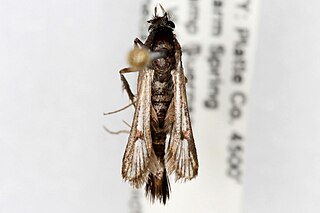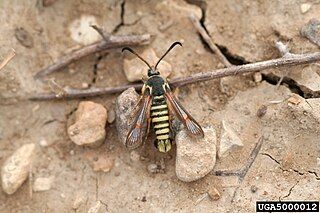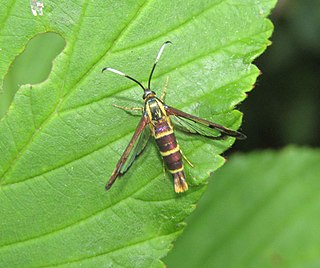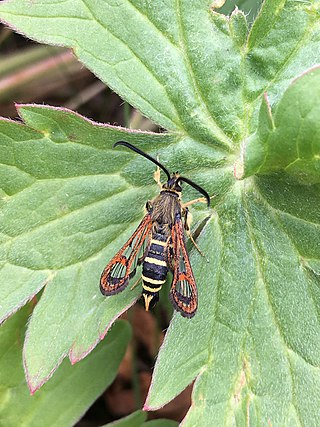
In Roman mythology, Evander was a culture hero from Arcadia, Greece, who was said to have brought the pantheon, laws, and alphabet of Greece to ancient Italy, where he founded the city of Pallantium on the future site of Palatine Hill, Rome, sixty years before the Trojan War. He instituted the festival of the Lupercalia. Evander was deified after his death and an altar was constructed to him on the Aventine Hill.

In Roman mythology, the Camenae were originally goddesses of childbirth, wells and fountains, and also prophetic deities.

In ancient Roman religion and myth, Carmenta was a goddess of childbirth and prophecy, associated with technological innovation as well as the protection of mothers and children and a patron of midwives. She was also said to have invented the Latin alphabet.

Carmenta is a genus of moths in the family Sesiidae.
Carmentalia was the two feast days of the Roman goddess Carmenta. She had her temple atop the Capitoline Hill. Carmenta was invoked in it as Postvorta and Antevorta, epithets which had reference to her power of looking back into the past and forward into the future. The festival was chiefly observed by women.
Carmenta mimosa is a moth of the family Sesiidae. It is native to Central America, but has been introduced to the Northern Territory of Australia in 1989.

Carmenta mimuli, the coronopus borer, is a moth of the family Sesiidae. The dark form is the typical form and is found in Arizona. The whitish form is non-typical and is known from the south-western United States, from Kansas to Arizona.
Carmenta anthracipennis, the liatris borer moth, is a moth of the family Sesiidae. It was described by Jean Baptiste Boisduval in 1875, and is known from the United States, including Florida, Texas, Massachusetts and Illinois.

Carmenta bassiformis, the eupatorium borer moth or ironweed clearwing moth, is a moth of the family Sesiidae. It was described by Francis Walker in 1856, and is found in the United States from Massachusetts to Florida, west to Wisconsin, Kansas and Texas.
Carmenta corni, the aster borer moth, is a moth of the family Sesiidae. It was first described by Henry Edwards in 1881. It is known in North America, including Wisconsin.

Carmenta giliae is a moth of the family Sesiidae. It was described by Henry Edwards in 1881, and is found from western Alberta to north-western British Columbia, south to Arizona and New Mexico. The habitat consists of mid-to-high elevation montane meadows.
Carmenta suffusata is a moth of the family Sesiidae. It was described by George Paul Engelhardt in 1946. It is known from the United States, including Florida, Oklahoma and Kansas.
Carmenta texana, the Texana clearwing moth, is a moth of the family Sesiidae. It was described by Henry Edwards in 1881 and is known from the US states of Texas and Florida.

Carmenta verecunda is a moth of the family Sesiidae. It was described by Henry Edwards in 1881, and is known from the United States, including Colorado, Utah, California and Arizona.
Carmenta wellerae is a moth of the family Sesiidae. It was described by W. Donald Duckworth and Thomas Drake Eichlin in 1976. It is known from southern Arizona in the US and northern Mexico. The habitat consists of mountains and foothills.
Carmenta haematica, the Argentine root borer, is a moth of the family Sesiidae. It was described by Ureta in 1956, and is known from Argentina and Chile.
Carmenta surinamensis is a moth of the family Sesiidae. It was described by Heinrich Benno Möschler in 1878, and is known from Brazil, Suriname, Guyana, Trinidad, Panama and Costa Rica. The larvae of the species have been found on seeds of the plant Prioria copaifera, Pentaclethra macroloba, and plants in the genus Mora.
Carmenta laurelae is a moth of the family Sesiidae. It was described by Larry N. Brown, Thomas D. Eichlin and J. Wendell Snow in 1985, and is known from the US state of Florida.
Carmenta chromolaenae is a moth of the family Sesiidae. It is native to Venezuela, but was introduced to South Africa for the biological control of Siam weed.






